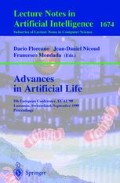Abstract
The Gaia hypothesis postulates that the Earth is a self-regulating system, that tends to maintain conditions habitable for life. The hypothesis grew from the recognition that organisms have fundamentally altered their planetary environment - its thermodynamic state, the composition of the atmosphere, the climate, ocean chemistry and the land surface. Changes in the environment have in turn altered organisms’ growth and the forces of natural selection acting upon them and this implies inevitable feedback connections between life and its environment. The resulting world seems remarkably well suited to carbon-based life, and has some important stabilising properties. For example, the Earth’s climate has remained habitable despite a 25% increase in the luminosity of the sun since the origin of life. Known feedback mechanisms more often show a tendency to regulate the environment than to destabilise it. Thus there is arguably an overall tendency for the Earth system to counteract gradual forcing and rapid perturbations that tend to drive the environment away from a habitable state. However, it is not obvious why this should necessarily be the case. If the Earth did not have some regulatory properties, we would probably not be here to remark on them, because life would have perished before evolution produced conscious observers. Furthermore, Gaia poses a puzzle when viewed from a Darwinian perspective: Why should the organisms that leave the most descendants be the ones that contribute to regulating their planetary environment?
Access this chapter
Tax calculation will be finalised at checkout
Purchases are for personal use only
References
J. E. Lovelock. The Ages of Gaia — A Biography of Our Living Earth. Oxford University Press, Oxford, 1995.
T. M. Lenton. Gaia and Natural Selection. Nature, 394:439–447, 1998.
J. W. Kirchner. The Gaia Hypothesis: Can it be Tested? Reviews of Geophysics, 27(2):223–235, 1989.
A. J. Watson and J. E. Lovelock. Biological Homeostasis of the Global Environment: The Parable of Daisyworld. Tellus, 35B:284–289, 1983.
Author information
Authors and Affiliations
Editor information
Editors and Affiliations
Rights and permissions
Copyright information
© 1999 Springer-Verlag Berlin Heidelberg
About this paper
Cite this paper
Lenton, T. (1999). Testing Gaia Theory with Artificial Life. In: Floreano, D., Nicoud, JD., Mondada, F. (eds) Advances in Artificial Life. ECAL 1999. Lecture Notes in Computer Science(), vol 1674. Springer, Berlin, Heidelberg. https://doi.org/10.1007/3-540-48304-7_4
Download citation
DOI: https://doi.org/10.1007/3-540-48304-7_4
Publisher Name: Springer, Berlin, Heidelberg
Print ISBN: 978-3-540-66452-9
Online ISBN: 978-3-540-48304-5
eBook Packages: Springer Book Archive

